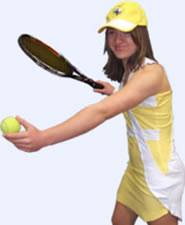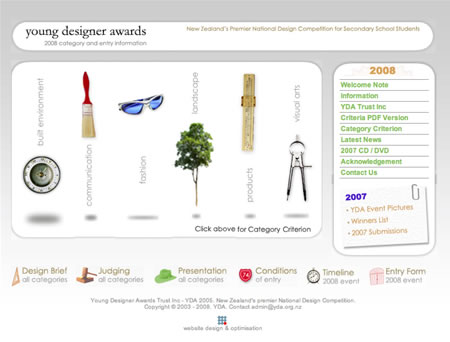Young Designer Awards
Teacher: Jo Young
School: Tauranga Intermediate School
The national annual Young Designer Awards offer an excellent opportunity for Technology teachers to engage and challenge their students. Now in its 16th year, the Awards promote design excellence and awareness of design as a possible career amongst school students by setting exciting design challenges in a range of categories. A combination of cash prizes, study allowances, and scholarships are awarded each year. The Young Designer of the Year (the best submission across all categories) receives $1,000 and an educational scholarship.
Tauranga Intermediate School Technology teacher Jo Young's students have had a remarkable run of success at the Awards over the past three years. In 2006, seven of her students were finalists and two of them gained firsts; in 2007, 13 were finalists and four gained firsts; and this year, Jo has 17 finalists in over five categories.
The 2008 competition has six categories – Built Environment, Communication, Fashion, Landscape, Products, and Visual Arts – and each has a number of sub-categories. The judges look for creative, innovative, well-balanced and functional designs that clearly show that entrants have followed the design process, by having analysed and fulfilled the design brief and met the end-user's requirements.
The whole format dovetails very neatly with the Technology process, Jo says, and is a great exercise for her students. "That's why I like the Awards so much. They really promote true Technological Outcomes."
Jo first became involved in the awards when she came to Tauranga Intermediate three years ago and picked up the reigns from a teacher who had organised some entries the previous year. A qualified clothing designer, Joanne focussed on the Fashion category of the awards and made the competition an extension of her Technology classes.
Each year student interest has grown – in 2008 Jo had an astounding 220 applications for the 22 places in the class. To apply, Year 7 and 8 students had to submit a design based on one of the YDA competition categories. A third were selected to sit a proficiency test using machinery, from which the final 22 were selected. The class meets for three hours a week during terms one and two and attends a four-day holiday skill development programme between terms two and three.
"At this level, you need to build up skills and help students translate their ideas and designs into something they can actually work with." Jo favours knit fabrics as they are forgiving and need less finishing than other types of materials. "Students can work it themselves, in contrast to something that's got heaps of zips and boning and all that sort of stuff, which you do at a more sophisticated level."
In 2008, Jo was joined by designer/pattern-maker Rhonda Hewlett who helps with the class on a voluntary basis. In the run-up to the competition, Jo and Rhonda have done a lot of internet research, looking at the work of other designers and checking on international trends. "It's been great to have another professional to share the passion and excitement with and to talk over technical issues."
Jo talks to the students about the importance of the Technology process and explains how part of the process involves considering the qualities of fabrics for particular uses. The relevance of Jo's explanations are reinforced by the competition format. Submissions are judged against criteria that are the building blocks of Technological Practice: Design Brief, Research, Concepts, Design Development, the Final Outcome and Evaluation. Entries are also judged on presentation, and a written report.
Each entrant must submit seven 'Technology Boards'. The boards display the project's brief, research photos and notes, concept designs and accompanying notes, along with design development details, final designs (accompanied with costings and fabric samples), a photo board of the finished garment and an evaluation of the process used.
DVDs are available from the Awards website showing selected pages from the entries of the top three students in each section at previous competitions, providing an indication of the standard of entry required.
Jo notes that most Year 8 students, who participated in the programme the year before, show improved ability to simplify their ideas and 'cut their coat to suit their cloth'. "Because they know how to work their materials and they know what they have to get done, they're more realistic in their aims."
"I'm teaching them to judge for themselves the realism of their own designs and ideas – pretty sophisticated for 11 and 12-year-olds. I am very proud of these students and their talent and the work they put into the Awards."




